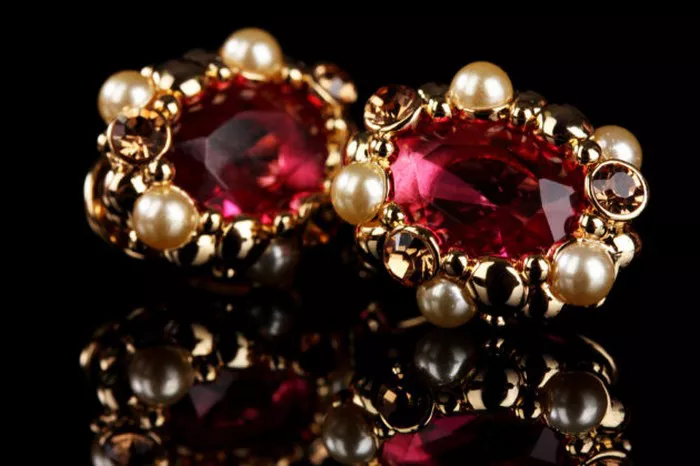Rubies have captivated humanity for centuries with their vibrant red hues and unparalleled hardness. Traditionally mined from the earth, these precious gemstones have also been recreated in laboratories, offering similar visual and physical properties. A common question that arises among gemstone enthusiasts and prospective buyers is whether lab-created rubies can be scratched. In this article, we will explore the characteristics of lab-created rubies, their hardness, and how they compare to natural rubies, providing a comprehensive understanding of their durability and care requirements.
What Are Lab-Created Rubies?
Understanding Synthetic Gemstones
Lab-created rubies, also known as synthetic or man-made rubies, are gemstones that are produced in a controlled laboratory environment. These rubies have the same chemical composition, crystal structure, and physical properties as natural rubies. The primary methods used to create synthetic rubies are the Verneuil process (flame fusion), Czochralski process (crystal pulling), and flux method. Each method involves different techniques to replicate the conditions under which natural rubies form in the earth.
The Appeal of Lab-Created Rubies
One of the main reasons for the popularity of lab-created rubies is their affordability compared to natural rubies. Since they are grown in a lab, they do not require the extensive and often environmentally damaging mining processes. Additionally, lab-created rubies can be produced with fewer inclusions and imperfections, making them visually appealing. However, despite their advantages, there are concerns about their durability, particularly in terms of scratching.
Hardness of Lab-Created Rubies
Mohs Scale of Hardness
To determine whether a gemstone can be scratched, we need to understand its hardness. The hardness of a gemstone is measured on the Mohs scale, which ranks minerals from 1 (talc) to 10 (diamond). Natural rubies, which are a variety of the mineral corundum, have a hardness of 9 on the Mohs scale. This high ranking means that rubies are incredibly resistant to scratching, surpassed only by diamonds.
Lab-Created Rubies and Hardness
Lab-created rubies also rank 9 on the Mohs scale, just like their natural counterparts. This is because they share the same chemical composition and crystal structure. Therefore, in terms of hardness, lab-created rubies are just as scratch-resistant as natural rubies. However, it’s important to understand that while hardness is a key factor in scratch resistance, it is not the only factor to consider when evaluating a gemstone’s durability.
Factors Affecting Scratch Resistance
Crystal Structure and Composition
The crystal structure and chemical composition of a gemstone significantly influence its hardness and overall durability. Since lab-created rubies are identical to natural rubies in these aspects, they share the same resistance to scratching from materials with a lower hardness rating.
Inclusions and Imperfections
Inclusions, which are internal flaws or impurities, can affect the durability of a gemstone. Natural rubies often contain inclusions, which can create points of weakness. Lab-created rubies, on the other hand, are generally produced with fewer inclusions. This can make them structurally more uniform and potentially more resistant to damage under certain conditions.
Environmental Factors and Wear
While the hardness of lab-created rubies ensures a high level of scratch resistance, it does not make them impervious to damage. Everyday wear and exposure to harsh chemicals, extreme temperatures, and physical impacts can still affect the gemstone. For instance, though rare, a severe impact might cause chipping or cracking, particularly if the ruby has inclusions.
Comparing Lab-Created and Natural Rubies
Visual and Physical Similarities
Visually, lab-created rubies are almost indistinguishable from natural rubies. Both exhibit the same rich red color and brilliance that make rubies so desirable. Advanced gemological tools and techniques are often required to differentiate between the two, as they share identical refractive indices and specific gravities.
Economic and Environmental Considerations
Lab-created rubies are often more affordable than natural rubies due to the controlled production process and the elimination of mining costs. Additionally, the environmental impact of lab-created rubies is significantly lower, making them a more sustainable choice for eco-conscious consumers.
Market Value and Perception
Despite their similarities, natural rubies generally hold higher market value and are often perceived as more prestigious. Collectors and investors typically favor natural rubies for their rarity and historical significance. However, lab-created rubies are increasingly accepted in the jewelry market, particularly among those who prioritize ethical sourcing and affordability.
See Also: How to Score the Cheapest Ruby Prices
Caring for Your Lab-Created Ruby
Cleaning and Maintenance
To maintain the beauty and luster of a lab-created ruby, regular cleaning is essential. Use warm soapy water and a soft brush to gently clean the gemstone, avoiding harsh chemicals that can damage the setting or metal. Ultrasonic cleaners can be used but with caution, especially if the ruby has significant inclusions.
Storage and Handling
When not wearing your lab-created ruby jewelry, store it in a soft pouch or a separate compartment in a jewelry box to prevent it from coming into contact with other gemstones that might cause scratches. Handle the gemstone with care, avoiding unnecessary exposure to abrasive materials.
Periodic Inspections
Regularly inspect your ruby jewelry for any signs of wear or damage. If you notice any issues, such as loose settings or chips, take the jewelry to a professional jeweler for assessment and repair. This proactive approach can help maintain the longevity and appearance of your lab-created ruby.
Conclusion
Understanding the Durability of Lab-Created Rubies
Lab-created rubies, with their identical chemical composition and crystal structure to natural rubies, boast a hardness of 9 on the Mohs scale, making them highly resistant to scratches. While their affordability, visual appeal, and ethical production make them a popular choice, it is essential to consider factors such as inclusions, environmental exposure, and proper care to ensure their longevity.
Making an Informed Choice
Whether you choose a natural or lab-created ruby, understanding their properties and care requirements is crucial. Lab-created rubies offer an excellent alternative to natural rubies, providing beauty and durability at a more accessible price point. By taking appropriate measures to protect and maintain your gemstone, you can enjoy its brilliance and charm for years to come.


